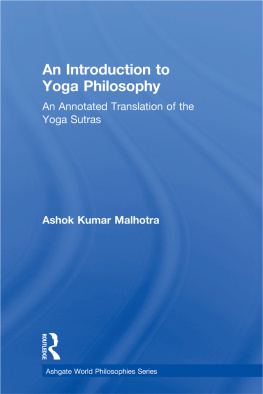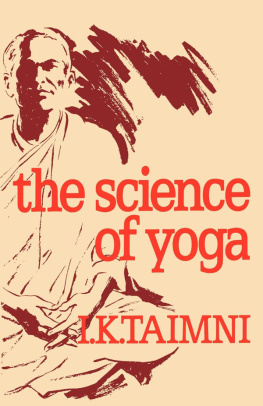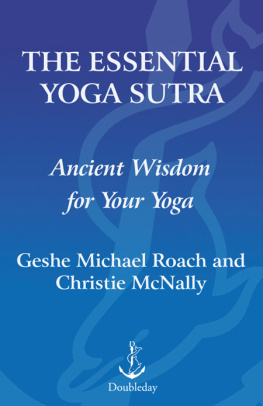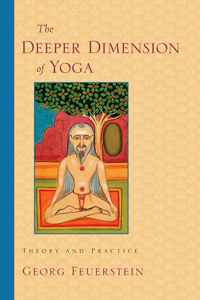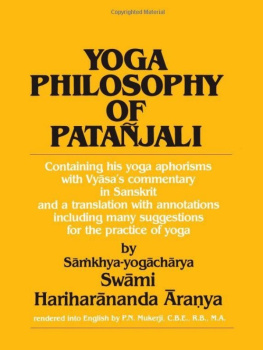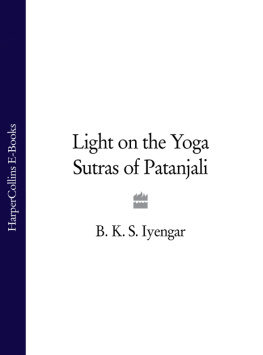Contents
Guide
Praise for THE YOGA STRAS OF PATAJALI
A superb contribution to the secondary literature on yoga. Critically grounded in the scholarship on yoga and the rich textual history of the tradition, Bryant nevertheless succeeds in transcending both the excessively technical approaches to yoga scholarship as well as much of the popular nonsense about yoga in the proliferating schools in the New Age marketplace. Bryant impressively communicates the essentials of yoga philosophy and practice to the thoughtful but non-specialist general reader. His translations from the Sanskrit are precise and well-grounded, and his interpretations are provocative and persuasive. His book will surely be welcomed by both serious scholars and responsible practitioners.
Gerald James Larson, Rabindranath Tagore
Professor Emeritus of Indian Cultures and Civilizations,
Indiana University, Bloomington, and Professor Emeritus of
Religious Studies, University of California, Santa Barbara
Dr. Bryants translation of and commentary on Patajalis Yoga Stras reveal the rich tapestry of schools and viewpoints that form the background for the yoga tradition. Dr. Bryant teaches us to delight in the diversity of ideas and commentaries that come along with the equally diverse practices of yoga. He helps us to look deeper into a universal pattern of all practices, taking us out of the fundamentalism and exclusivity of our own schools. Grounded in an unbiased sense of ancient history, he clears away any confusion about the meaning of and the connections between different yoga philosophies. His book is a well-rounded and inspiring course on the real connections between ideas, practices, and direct experience. I enthusiastically recommend it.
Richard Freeman, author of The Yoga Matrix
Edwin Bryant has provided us with a sweeping, kaleidoscopic overview of this essential yoga text. His clear and engaging prose brings Patajalis aphorisms to life, taking his reader on an amazing journey through the history of yoga philosophy.
David Gordon White, Professor of Religious Studies,
University of California, Santa Barbara, and author of Sinister Yogis
Edwin Bryant unpacks the layers of history and traditional commentaries that are in the suitcase of the Yoga Stras. Through his depth of understanding and research rendered in this detailed map, we are able to travel a little closer to our soul. I will be reading and referring to his text for a lifetime.
Rodney Yee, author of Moving Toward Balance
The greatest strength of Edwin Bryants work on the Yoga Stras is that he has taken the most abstruse commentaries and made of them a fluidly readable work. He has made an academically serious study into a presentation of most symmetrical beauty. He has brought together the views of different schools of philosophy and made them rhyme as though in poetry. We need more of such works of serious and yet readable philosophy.
Swami Veda Bharati, D.Litt.,
Chancellor, HIHT University, Dehradun, India
Bryants meticulous study of the Yoga Stras examines its reception throughout the past fifteen hundred years by a variety of commentators. Understanding that all religious books operate in the context of lived communities, Bryant suggests that the worship of Vishnu as taught by Krishna in the Bhagavad Gta has played an important role in how the practice of yoga has been understood and communicated, particularly for the past five hundred years. For practitioners of yoga, this book provides a fresh look at a complex philosophy of applied spirituality.
Christopher Key Chapple, Doshi Professor of Indic
and Comparative Theology, Loyola Marymount University,
and author of Yoga and the Luminous
What I like about Edwin Bryants edition is that it serves as a concordance of commentaries, a commentary on the commentaries without which this text (or any other compendium of sutras) is unintelligible. It is a pleasure to watch as Bryant uses the commentaries to show how thinking about the Yoga Stras shifted and evolved over the years.
Dr. Robert Svoboda, Ayurvedacharya
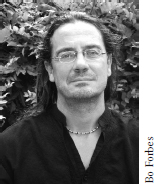
Edwin F. Bryant
THE YOGA STRAS OF PATAJALI
Edwin F. Bryant received his Ph.D. in Indology from Columbia University. He has taught at Columbia University and Harvard University and since 2001 has been professor of Hindu religion and philosophy at Rutgers University. Bryant has written numerous scholarly articles and published five previous books, including a translation of the four thousand verses of the tenth book of the Bhgavata Pura called Krishna: The Beautiful Legend of God. In addition to his work in the academy, Bryant teaches workshops on the Yoga Stras and other Hindu texts in yoga communities around the world. His website is www.edwinbryant.org.
ALSO BY EDWIN F. BRYANT
Krishna: A Source Book (as editor, 2007)
The Aryan Invasion: Evidence, Politics, History
(as coeditor with Laurie Patton, 2005)
The Hare Krishna Movement: The Post-Charismatic Fate of a Religious Transplant (as coeditor with Maria Ekstrand, 2004)
Krishna: The Beautiful Legend of God (as translator from Sanskrit with notes and introduction, 2003)
The Quest for the Origins of Vedic Culture:
The Indo-Aryan Invasion Debate (2001)
THE YOGA STRAS OF PATAJALI
A New Edition, Translation, and Commentary
WITH INSIGHTS FROM THE
TRADITIONAL COMMENTATORS
EDWIN F. BRYANT
North Point Press
A division of Farrar, Straus and Giroux
New York
The author and publisher have provided this e-book to you for your personal use only. You may not make this e-book publicly available in any way. Copyright infringement is against the law. If you believe the copy of this e-book you are reading infringes on the authors copyright, please notify the publisher at: http://us.macmillanusa.com/piracy.
To my daughter, Mohini
And to all teachers of yoga, that Patajalis Stras may inform and inspire their teachings
by B.K.S. Iyengar
I congratulate you on your lucid commentary on the Yoga Stras of Patajali. I have appreciated your commentary quoting the traditional commentators Vysa, Vcaspati Mira, akara, Bhoja Rja, Vijnabhiku, and Hariharnanda, and it reads well. You have presented it in simple and fluent language, which I am sure will be easily understandable to readers. As you are dedicating it to the teachers of yoga, I am sure your book will provide the readers with plenty of knowledge so that they may grasp the philosophy behind the subject and move toward the higher aspects of life in their sdhana (practice).
Ptajala Yoga is a practical subject and not a discursive one. As each individual is electrically alive and dynamic, so yoga is a living, dynamic force in life. In order to savor its essence, one needs a religiously attentive dynamic practice done with awareness and absorption. The life of man is not only the conjunction of prakti (the sheaths of the body) and purua (the soul), but also a combination of these two.



